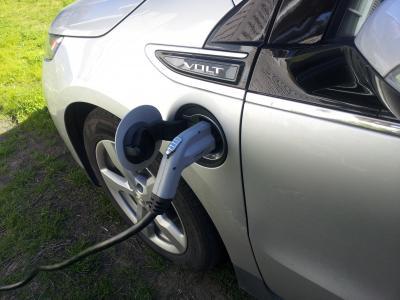Electric cars are fine for people who have another car as a back-up or who only make short trips or who are not afraid of a little charge rage in the office parking lot.
For everyone else, electric cars only work if they are heavily subsidized.
To become mainstream, and not just toys for elites like a Tesla, batteries need to get battery or they need to be leased. Otherwise, they remain in the realm of well-connected CEOs who get gigantic government subsidies to set up shop - like Tesla.
According to the authors, of a new paper in Manufacturing and Service Operations Management, those are the two big psychological barriers are holding back an increase in electric vehicle purchases. People have range anxiety, the concern that the driving range of electric vehicles won't be enough to meet their needs, and resale anxiety, the concern that the price of used electric vehicles will not hold strong in the future. That second one is because people know batteries have not made a real improvement in 25 years and there is no incentive to do so when taxpayers are subsidizing the industry. But no one wants to buy a used electric car knowing a gigantic bill for batteries is in the near future.
If you buy one of these used, you are a sucker. Credit: Mark Shwartz/Stanford University
To understand the impact of those consumer anxieties, the authors used a two-stage game-theoretic modeling framework. The first stage examines the introduction phase, in which only new electric vehicles are available. At this stage, consumers have little experience with the product and exhibit both types of anxieties. The second stage is the maturity phase, in which both new and used electric vehicles are available in the market. At this stage, the authors consider anxieties to diminish as consumers learn more about the electric vehicles and the market.
Calibrating the model to the San Francisco Bay area freeway network, auto market figures, and industry reports, the authors examined several business options to determine which would reassure consumers while also yielding desired profits.
In contrast to the common current American model for electric vehicles, in which consumers own the vehicle with battery and recharge it at home overnight, two models offer promising alternatives, the authors write.
-
1.The first model represents the case in which battery enhanced charging service is made available through additional support infrastructure. This includes, for example, Tesla's supercharger stations and other quick charging stations that are being introduced in the U.S. by firms such as Chargepoint and NRG eVgo.
2.In the second model, consumers lease the batteries and are also offered enhanced battery charging services. One example is a business model that offers enhanced charging in the form of battery swapping coupled with the battery leasing service. In a second example, Renault is selling its ZOE in Europe with battery leasing and the support of quick charging infrastructure.
The authors' key findings are:
- Despite the qualitative similarity between the two anxieties, their impacts on electric vehicle adoption can be quite different. While range anxiety typically hurts adoption, resale anxiety can actually help adoption (depending on the EV production cost level).
- Further, interestingly, anxieties do not necessarily harm consumers; in fact, they typically benefit consumers since the presence of anxieties forces the firm to cut vehicle prices and invest more in public charging infrastructure.
- The battery leasing service improves the firm's profit at the expense of total adoption and consumer surplus, when not offered with the public charging option.
- Most importantly, increasing the driving range of electric vehicle through public charging infrastructure typically yields more socially desirable adoption outcomes (greater adoption and emission savings) than increasing the battery capacity.
Overall, under many instances, the authors find that the first model provides the highest benefit (electric vehicle adoption, emission savings, profitability, and consumer surplus) unless resale anxiety is high. When the level of resale anxiety is relatively high, the second model typically offers a more desirable outcome.
"Therefore," the authors advise, "policy makers must take into account these factors in implementing governmental policies to properly incentivize the involved parties, especially the private sector."





Comments